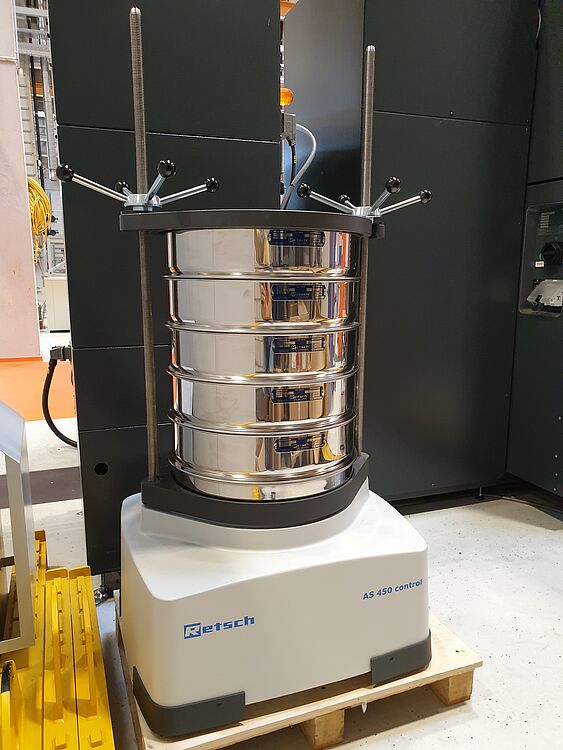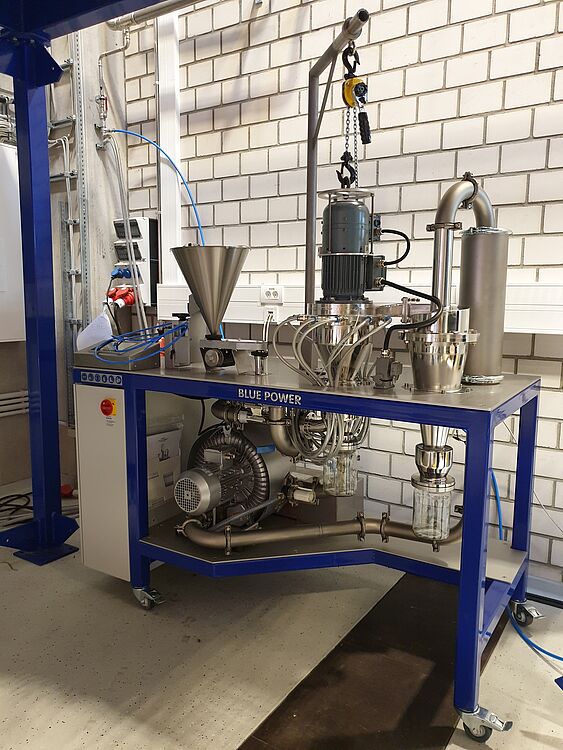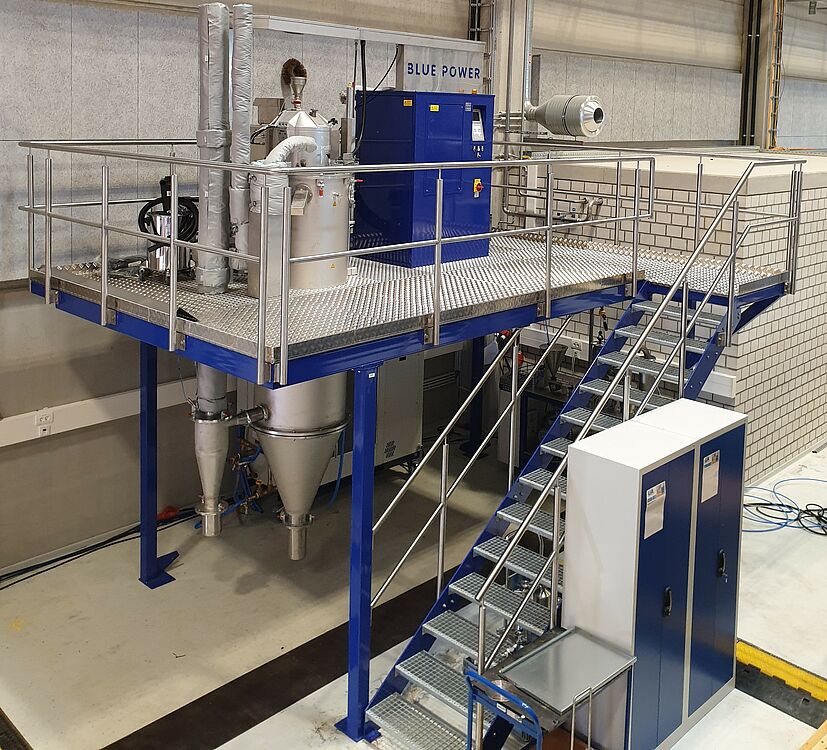The powder production metal field was rebuilt in 2020.
- AS 450 control vibration screening machine (Retsch)
- Air classifier AC1000G (Blue Power Casting Systems)
- Powder atomisation system AU 3000 (Blue Power Casting Systems)
- Tilting induction melting furnace IT-KTS-120/180/1900 (Linn High Therm)
- Vacuum quenching furnace XGraphit series (Xerion)
Contact: Sven Gründer
Vibratory sieve shaker AS 450 control (Retsch)

Technical specification
- Feed material: powders, bulk solids, suspensions
- Maximum quantity of material to be sieved: 25 kg
- Measuring range: 25 µm - 125 mm
- Maximum number of fractions: 13 / 9
- Minimum number of fractions: 3
- Amplitude: digital; 0.2 - 2.2 mm
- Sieving: dry and wet
Application
Separation, fractionation, particle size determination of powdery materials and bulk solids.
Air classifier AC1000G (Blue Power Casting Systems)

Technical specification
- Feed material: Powder
- Maximum feed quantity: 6 kg (bronze or steel)
- Classification range: 4 - 200 µm
- Protective atmosphere: argon or nitrogen
- Maximum speed of classifier wheel: 10000 min-1
Application
Flexible classification of powdery materials in small quantities. Separation of powder into fine and coarse powder fractions, especially in the range < 25 µm, where conventional screening methods usually fail.
AU 3000 powder atomisation system (Blue Power Casting Systems)

Technical specification
- Maximum temperature: 2000 °C
- Atomising medium: argon or nitrogen
- Maximum gas pressure: 30 bar
- Maximum gas temperature: 450 °C
- Atomiser nozzle system: free-fall and clouse-coupled atomiser
- Crucible volume: 3 l
- Maximum powder quantity (steel): 22 kg
- Cycle time: 3 - 4 h
Application
Production of new, innovative and specialised metal powders in small batches for research and development:
- Alloys that are not available on the market;
- Precious metals that are usually required in small quantities and where any metal loss must be avoided;
- Powder materials for additive manufacturing (powder-based processes: Laser/Electron-Beam Melting, Laser Metal Deposition) where high purity, sphericity and reproducible particle size distribution are required;
- Small-volume production with the lowest possible cross-contamination and short process time, which cannot be realised in an economically viable way on conventional systems.
